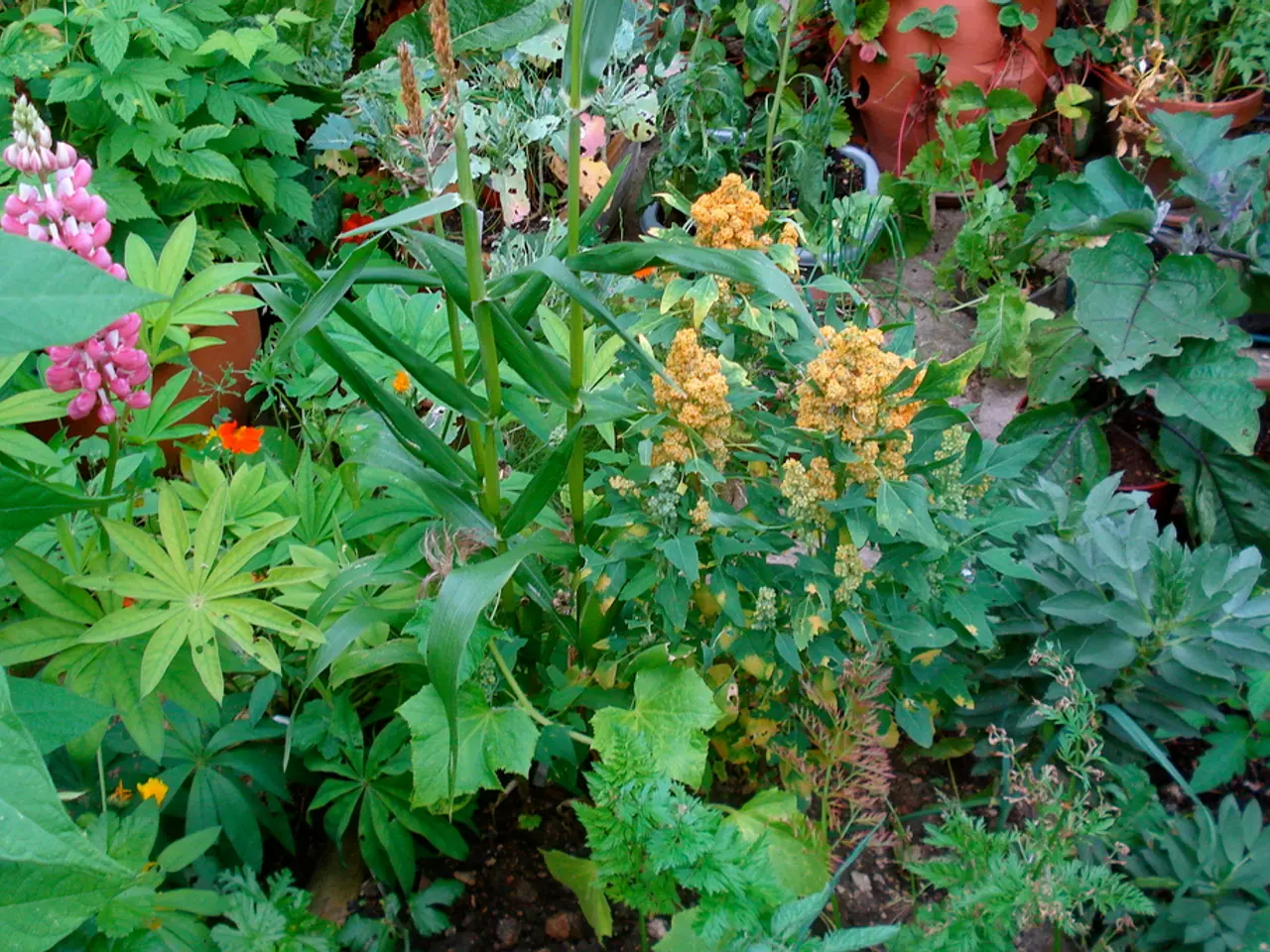Native plants entice songbirds to populate your garden, as per the advice of wildlife specialists.
In a bid to create a thriving wildlife garden that caters to the needs of birds, experts recommend a mix of berry-producing shrubs, seed-bearing flowers, and nectar-rich blooms.
Spicebush (Lindera benzoin), with its berries favoured by thrushes and migratory birds, is a key recommendation. The shrub also supports spicebush swallowtail caterpillars, offering food for birds.
Sunflowers, known for their large seed heads, attract finches, sparrows, and chickadees from late summer into winter, providing a vital winter food source.
Serviceberry (Amelanchier spp.) produces purple berries in early summer enjoyed by robins, cardinals, and waxwings, and its flowers attract insects vital for nesting birds.
Chokecherry, a native shrub with prolific white flowers that support pollinators and fruit that feeds birds, is another recommended plant.
Nectar-rich tubular or bell-shaped flowers, such as fuchsia, beebalm, columbine, lobelia, lily of the valley, foxglove, and coral bells, are especially important for attracting hummingbirds and other nectar-feeding birds.
Plants like coneflowers, though more noted for butterflies, contribute to a pollinator-friendly garden that indirectly supports bird populations.
Experts emphasise the importance of plants that provide year-round resources. Seeds in fall/winter, berries in summer, and nectar in spring and summer offer natural food sources and shelter, thereby supporting diverse bird species.
Ivy flowers can be covered in bees and other flying insects, and berries that many species of birds, like blackbirds and wood pigeons, love. Removing ivy from a garden may be discouraged as it is beneficial for birds, providing cover and nesting sites.
Holly berries are not fed on by birds until late winter, providing an important food source during a time when other sources can be scarce. The spiky leaves of holly can provide protection for smaller birds from predators if they roost along the branches.
Honeysuckle bears small red berries that are attractive to many bird species, including blackcaps. Native Ivy provides cover from predators, great opportunities for nesting, and food for insects, especially favoured by wrens and robins.
Growing holly is beneficial for birds, providing excellent security hedging and a signature festive look. Sunflowers can be grown right now to attract birds, as sunflower seeds are a robin's favourite food.
Charities such as SongBird Survival are encouraging people to choose plants for their garden that benefit birds. Providing a food source is vital to encourage birds to keep coming back to a garden. Only female holly plants will produce berries, requiring a male plant nearby for pollination.
The sound of birds chirping in the morning can be encouraged by planting certain plants in a garden. Lucy Taylor, a garden wildlife expert at Vine House Farm Bird Feeder, explains the benefits of climbing plants for birds.
Rosehip provides an important food source for birds throughout the year and can also act as a natural fertilizer with numerous health benefits.
References:
[1] Wildlife Gardening: How to Encourage Wildlife Into Your Garden, BBC Gardeners' World Magazine, 2020. [2] The Best Plants for Attracting Birds to Your Garden, National Wildlife Federation, 2021. [3] Bird-Friendly Gardening, The Royal Horticultural Society, 2022. [4] Top 10 Plants for Birds, SongBird Survival, 2021. [5] Creating a Wildlife-Friendly Garden, The Guardian, 2019.
Sunflowers, grown in the garden, can be a robin's favorite food source, attracting finches, sparrows, and chickadees from late summer into winter, contributing to a thriving home-and-garden lifestyle that supports diverse bird species. To encourage a year-round food source and shelter for birds, gardening experts recommend adding holly to your garden, as holly berries are not fed on by birds until late winter, providing birds with an essential food source during scarce times, and holly leaves offer protection for smaller birds from predators if they roost along the branches.





